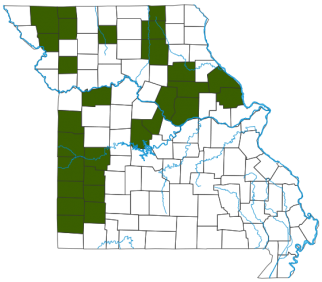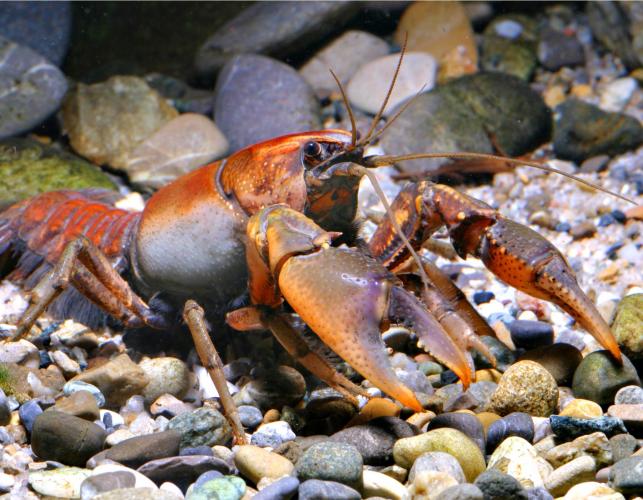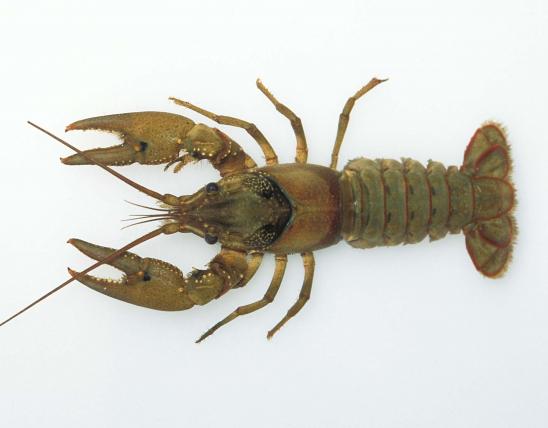
The grassland crayfish is bright red to reddish brown, without conspicuous blotches or spots. The pincers are short and heavy, and the high, dome-shaped carapace is longer than the abdomen. The carapace is not separated at its middle by a space (areola).
The grassland crayfish superficially resembles the devil crayfish, another burrowing species. The devil crayfish is never a uniform bright red, as are many adult grassland crayfish. Males of the two species are readily separated by the shape of the gonopod tips (nearly straight in the grassland crayfish, strongly curved in the devil crayfish).
Adult length: about 2 to 3 inches.

Mostly found in northern Missouri, north of the Missouri River, but extending along our westernmost counties almost as far south as the Arkansas border. A prairie species, its range barely penetrates into the Ozarks.
Habitat and Conservation
The grassland crayfish occurs widely in grasslands and prairies. Its burrows are often a long distance from any surface water. These can be 6 feet or more in depth and may or may not have "chimneys" above ground. Most people never see grassland crayfish, except on warm, humid nights when they leave their burrows, or during wet periods when juveniles and occasional adults appear in temporary wetlands, ditches, and stream channels.
Food
Crayfish are generally omnivores, eating a wide variety of plant and animal materials.
Status
Most public prairies in Missouri support large populations, but this crayfish is seldom seen by visitors because of its secretive habits.
Life Cycle
In late spring and early summer, aggressive and sexual encounters result in dominant breeding pairs inhabiting prime burrowing sites, with one male and one female per burrow. Reproduction apparently occurs over an extended period. Starting in late winter and early spring, females move to open water with their newly hatched young. The young remain in the open water, where they mature over the summer, while the females return to their burrows.
Human Connections
Northern crawfish frogs and many other prairie animals use this crayfish’s burrows as retreats in hot, dry weather. Humans must preserve our precious remnant native prairies in order to protect all these species from oblivion.
Protecting the water table and reducing soil compaction from excessive use are important. When soil becomes compacted or the water table becomes too low, burrowing crayfish such as this species can be eliminated. This, in turn, reduces the available burrows the crawfish frogs require.
Ecosystem Connections
Northern crawfish frogs primarily use prairie crayfish burrows for retreats, spending most of their time in the burrow. A crayfish burrow being used by crawfish frogs will have a noticeably flattened and denuded platform at the entrance. Because crayfish burrows can be about 3–5 feet deep and are often at or below groundwater level, the frogs are able to use them as winter retreats, too.
Crayfish are an important link in the food chain between plants and other animals, breaking down plant materials that are resistant to decay. Crayfish in turn are an important food for many other animals, and their burrowing helps rainwater to soak deep into the earth.





























